How To Draw A Rococo Style Tree
What is Rococo Style?
Rococo began in Paris in the early 18th century, before spreading throughout France, Germany, Austria, and other parts of Europe, visible in painting, sculpture decorative arts and architecture. Derived from the French word "rocaille" pregnant shell, it referred to the shellwork and intricate detailing used in moldings and rockwork. Rococo is sometimes referred to as "niggling bizarre" for being highly decorative and evolving from Bizarre style.
Famous Works in Rococo Style
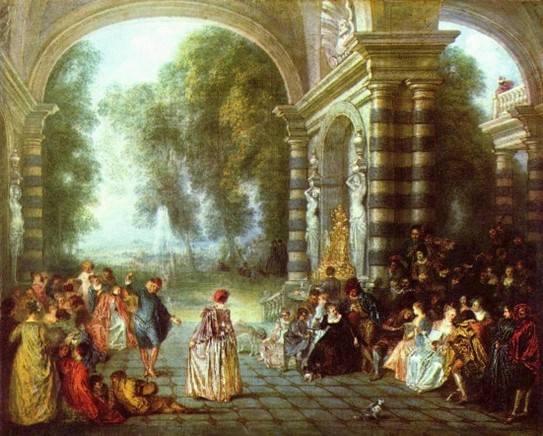
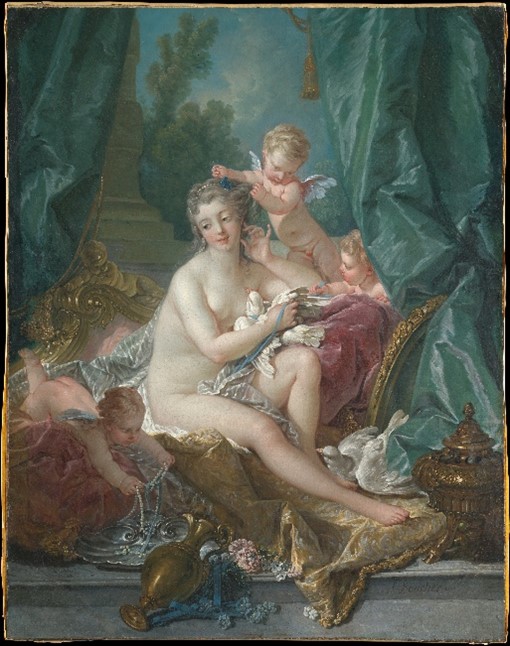
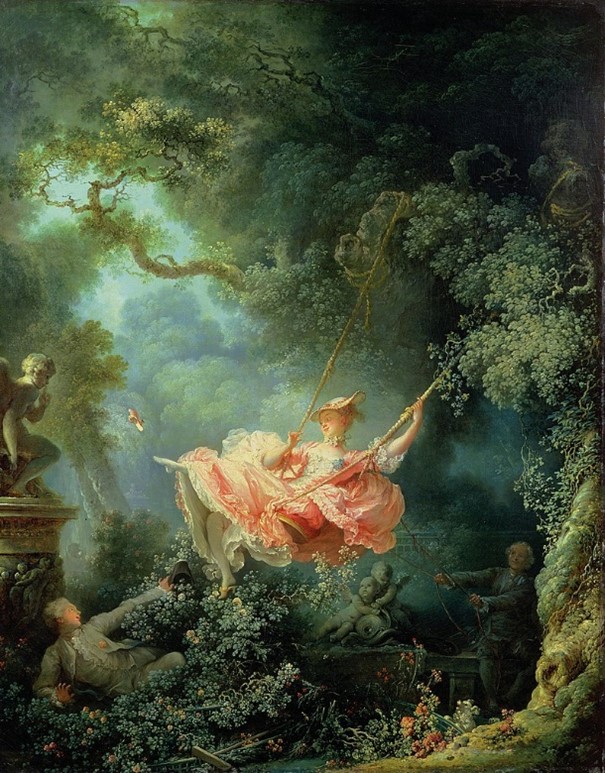
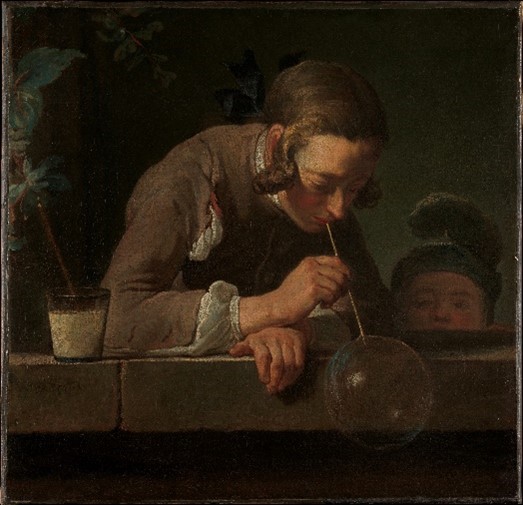
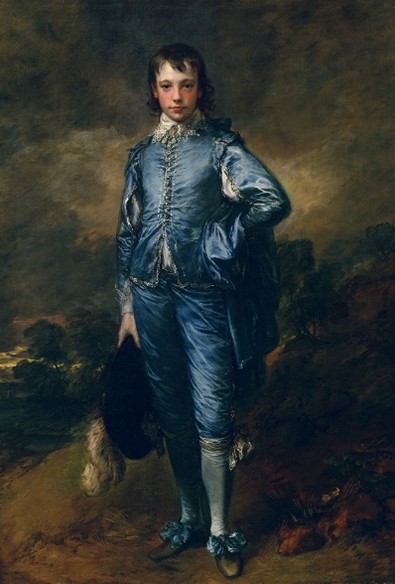
Historical Background and Typical Rococo Style
In 1715, after the death of Louis 14, French nobility left Versailles, and moved dorsum to Paris. This was a time of fun and frolic, where aristocrats were gratis to live without the restrains of the palace life, demanded by the King. This is where Rococo way art and Rococo decorative arts began.
Characteristics of Rococo Painting
Painters from the Venetian School such every bit Giorgione and Titian influenced Rococo painters in their use of color and erotic subjects. Rococo painting captured the playful, everyday lives of aristocrats who lived for pleasure. Colors lightened to white and silver, with pastels, especially pinkish, blue, and green. Rococo artists used brushstrokes that were light and curvaceous with sweeping diagonals.
Subject matter in Rococo paintings included romance and love between mortals or mythical beings, consummate with cupids, puttis, angels and lush gardens. Landscape paintings were particularly beautiful in Rococo fashion with a dreamlike quality.
The Begetter of Rococo Style: Jean Antoine Watteau
Fêtes galantes a new genre in Rococo painting, or courtship party painting, as illustrated through the artwork of French painter Jean Antoine Watteau (1684–1721) captured the lives of xviiith century, well-dressed aristocrats pursuing romantic love.
In Watteau's Rococo painting The Pleasures of the Ball (1717), lavishly dressed aristocrats enjoy the pleasure of each other's company, while outside on a courtyard, surrounded by stately architecture and the beauty of nature.
The Embarkment for Cynthera (1717) shows couples about to board a vessel, either to or from the Greek island of Cythera, with cupids circling excitedly. The island was said to exist the birthplace of Aphrodite the Greek goddess of love. Fittingly, Watteau adds a statue of Venus and Cupid to the right.
Other French Painters in the Rococo Style
François Boucher (1703-1770) was known for his Rococo paintings of mythology. The Toilet of Venus (1717) is a romanticized vision of the goddess of love surrounded by three cupids. The Rococo painting is housed in The Metropolitan Museum of Fine art, in New York.
Arguably the most famous piece of work from 18thursday century French Rococo paintings is The Swing past Jean–Honoré Fragonard (1732-1806). Aristocrats play, every bit a woman allows a man to expect under her skirt, while on a swing pushed by a Bishop. The scene takes identify in a private, lush garden, a typical setting in Rococo fashion.
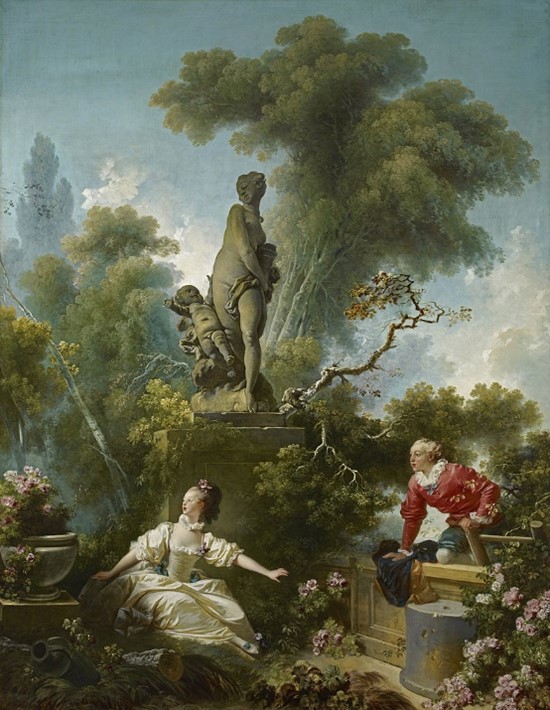

In Lather Chimera (1733- 34) past xviiith century French painter Jean Siméon Chardin (1699–1779) two children play, while the older one blows a large soap bubble, representing the innocence of childhood.
Italian Rococo Paintings
The Entrance to the Thou Canal (1730) by Italian Rococo painter Canaletto (1697-1768) invokes the perfect day in xviiith century Venice, every bit seen through the optics of a British tourist, who were his clients, is at present at the Museum of Fine Arts in Houston. Through this artist, Rococo manner spread throughout Italian republic.
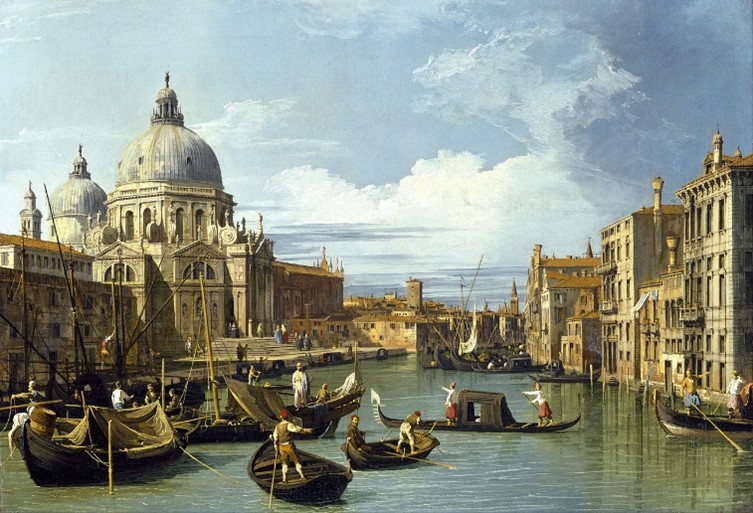
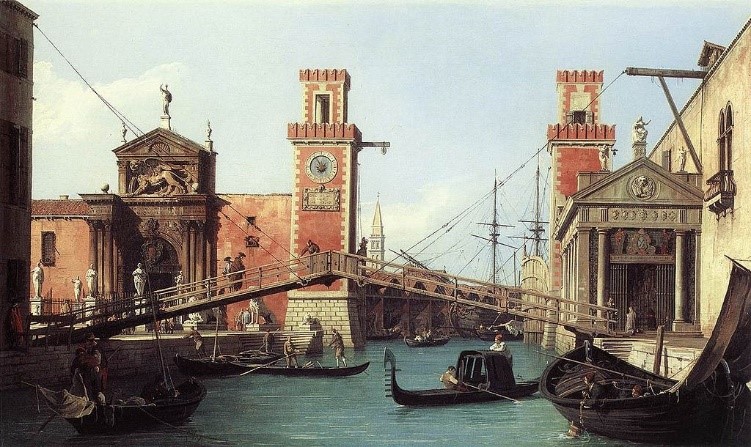
English Rococo Painting
Thomas Gainsborough (1727-1788) was an English portrait and landscape painter who made his biggest impact when merging the 2. The Blueish Boy is a pop xviiithursday century image past the artist. This Rococo painting captures a male child dressed in rich blue, achieved through the artist'southward fine brush strokes in multiple shades. This piece of work in non only a portrait, but a study of fashion during the Rococo catamenia.
Other paintings adjure to the quality of his painting. Portraits of elegantly dressed aristocrats illustrate rich and expensive fabrics used in fashion.
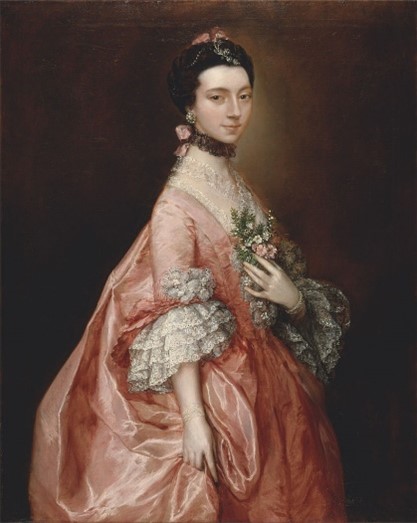
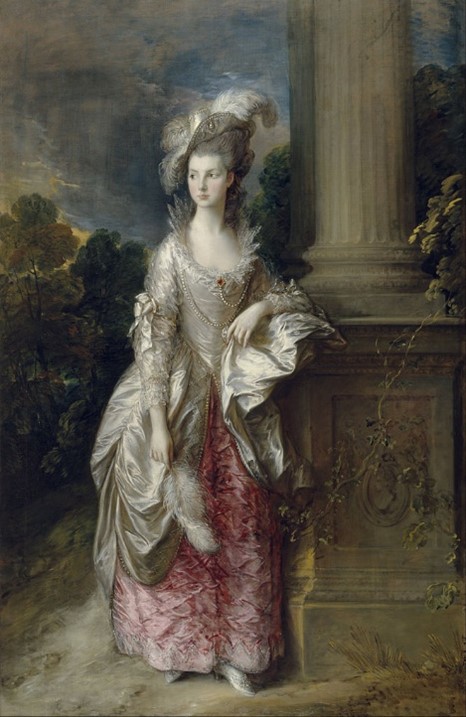
Rococo Manner: Sculpture
Rococo sculpture and architecture were interlinked in the Rococo menstruum and followed the aforementioned discipline matter as painting. French Rococo sculptor Edmé Bouchardon (1698- 1762), who during his career worked for Male monarch Louis Fifteen, produced memorable Rococo sculptures such as the Fountain of the Seasons (1739–45) in Paris. Rising two stories, the Rococo sculpture with its monumental statues of the seasons, the putti ornamentation is pure Rococo. Cupid Cutting His Bow from the Order of Hercules (1739–1750) also represents the period as does the merely entitled Rococo sculpture Cupid (1774).
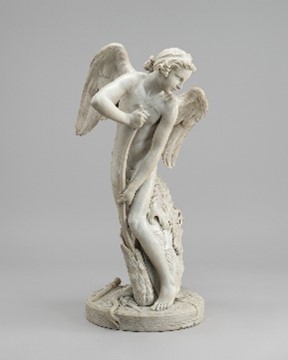
Rococo Style: Decorative Arts
In the Rococo menses porcelain figurines became pop for the mantelpiece or decorative arts centerpieces on the dining table. In 1710, Meissen established the first hard paste porcelain factory in Europe, to capture the same decorative art elements of imported Chinese porcelain.
At first Meissen porcelain fine art or decorative arts in tableware included tea and chocolate pot sets. Afterward, in 1735, Meissen began producing its beginning porcelain figurines, with subject area matter drawing from paintings. These works in xviiith century Rococo mode were shortly being copied by Sevres Porcelain factory, in France.
Influence of the School of Fontainebleau on Rococo Style
School of Fontainebleau, in France, established past Italian Mannerist Rosso Fiorentino (1494- 1540) was foundational to Rococo style interior design. Florentino was commissioned to work on the Palace of Fontainebleau past King Francis I, in 1530. The décor features frescoes, with elaborate frames made from stucco, featuring nymphs, putties, garlands, and baskets filled with fruit. Elaborate forest trim featured gilding. This would heavily influence Rococo decorative arts and the Rococo menses in general.
Rococo Way: Interior Design
Rococo style interiors were total of soft pastel colors, painted ceilings and trompe 50'oeil. Interior elements paid particular attention to moldings, decorated in curvaceous forms using S and C shapes. Natural shapes from nature dominated, especially seashells, flowers, birds, and vines. Fontainebleau inspired elements included cupids, putties, and gilding.
Chinese elements emerged based on porcelain wares. Mirrors were used to attract low-cal and a feeling of spaciousness. All forms of decorative arts flourished. Venetian drinking glass chandeliers and the use of silk and velvet were influenced past Italian Rococo. Tapestries and small-scale paintings helped to create intimate spaces. Outdoor private gardens and secluded parks allowed for flirtation.
Hôtel de Soubise, in Paris, French republic, built in Baroque style, in the early 1700s was the metropolis mansion of Prince and Princess of Soubise, redecorated by French architect Germain Boffrand (1667 -1754) in the 1730s. The Salon de la Princess is pure French Rococo manner. The room is adorned with gilded carved wood or boiserie, cherubs, ceiling paintings and mirrors in Rococo decorative mode.
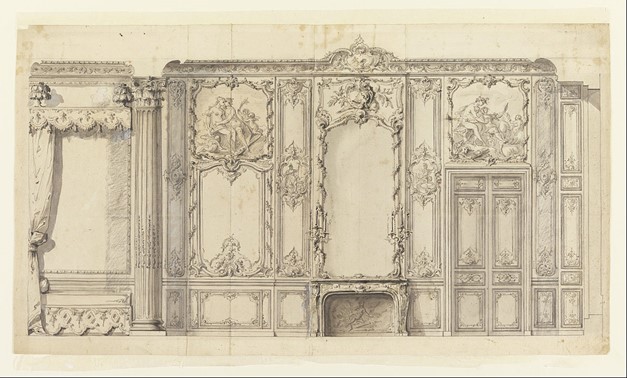
Rococo Style: Rococo Architecture
German language Rococo employed bold pastel shades for exteriors and interiors. François Cuvilliés (1695- 1768) the Belgian-born architect and designer built the pinkish painted, 18th century Amalienburg between 1734- 1739. This was a pocket-sized extension as part of Nymphenburg Palace Park, in Munich, Frg. The Rococo compages was commissioned by Elector Karl Albrecht for his wife Maria Amalia as society for pleasure and hunting.
Classical elements appear in the form of Ionic pilasters and a broken pediment above the door that are purely decorative.
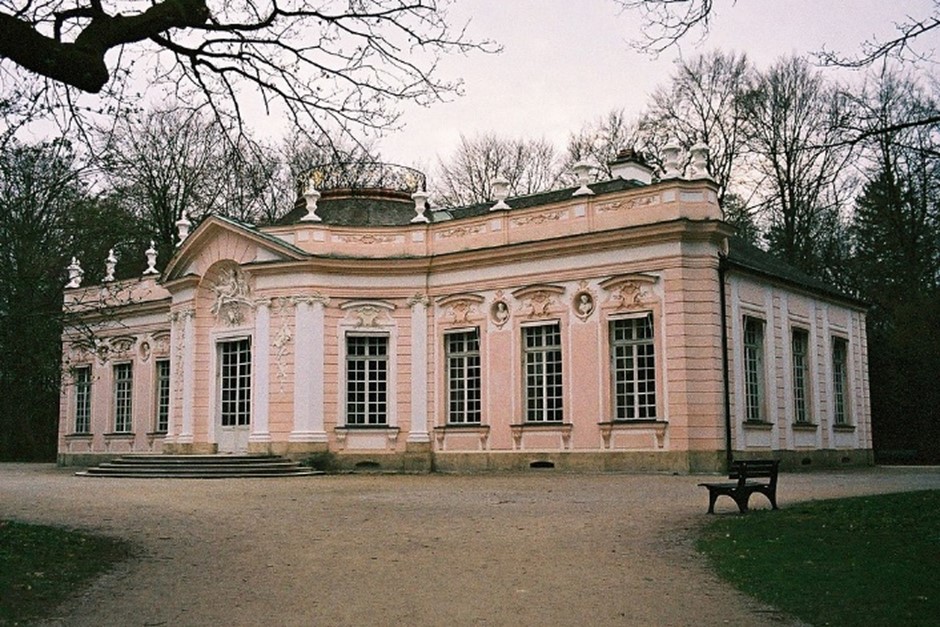
The stucco work was crafted past German painter and stucco plasterer Johann Baptist Zimmermann (1680-1758). Considered a prime number example of Rococo fashion his piece of work in The Hall of Mirrors is resplendent with Bavarian bluish panels and 3-dimensional silver gold-stucco work, on walls and ceilings. The windows overlook the garden, while mirrors and doors alternate to reflect light.
The interior ornament of the bedroom is lemon yellowish, with wall carvings in silverish and blue stucco. The Bluish Chiffonier was used to store hunting gear, with cut-out niches that housed the hunting dogs. The surface area was highly decorated to looks similar Chinese porcelain wares, which more in need during the Rococo menses.
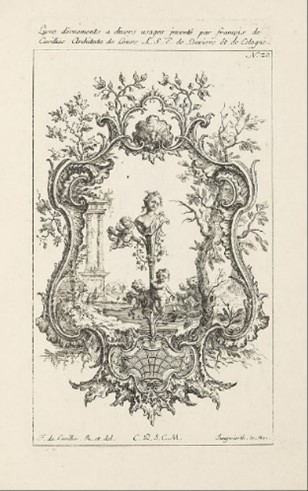
Notable Rococo Artists
- Jean Antoine Watteau (1684-1721) French
- Jean-Honoré Fragonard (1732-1806) French
- Jean Siméon Chardin (1699-1779) French
- Canaletto (1697-1768) Italian
- Thomas Gainsborough (1727-1788) English language
- Edmé Bouchardon (1698- 1762) French
Notable Rococo Architects
- Germain Boffrand (1667- 1754) French
- François Cuvilliés (1695- 1768) French
Rococo Terms in Art
- Fêtes galantes
- Putti
- Sculpture in the round
- Hard paste porcelain
Rococo Compages Terms
- Boiserie
- Bavarian blue
- Ionic pilaster
- Cleaved pediment
- Stucco
- Cartouche
Source: https://www.artlex.com/art-terms/r/rococo/
Posted by: murphyussighboult1999.blogspot.com


0 Response to "How To Draw A Rococo Style Tree"
Post a Comment